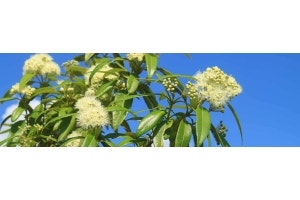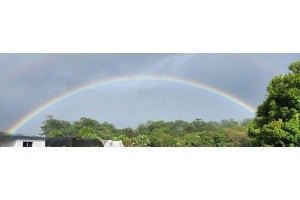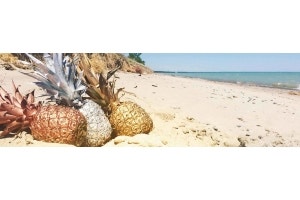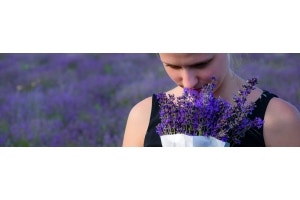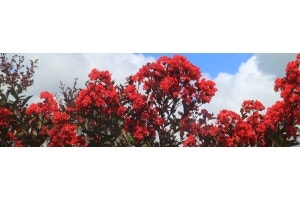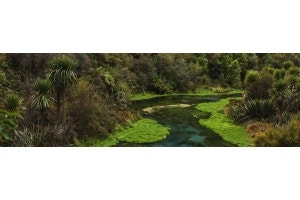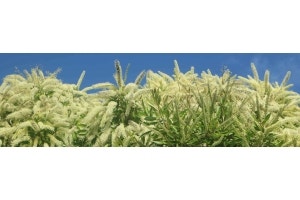
What's A Myrtaceae?
Natives from the Myrtaceae family are among the most popular plants we grow and sell here at Australian Plants Online. Myrtaceae includes many favourite garden natives- myrtles, which give the family its name : like lemon myrtle, grey myrtle, honey myrtle, juniper myrtle
- lilly pilly hedges
- bottlebrush and NZ xmas bush
- tea tree and waxflower
- water gum, paperbark
- eucalypts and flowering gums
- golden penda
- midgem berry and feijoa
Bad News : If you're in South Australia, Tasmania, or Western Australia
Because of a potential disease called Myrtle Rust, which can impact native bushland and commercial crops, all nurseries are restricted by law from moving these plants across state borders to you. That means for gardeners in SA, TAS, WA - we can't send you any Myrtaceae plants.
Good News
There are still heaps of gorgeous native plants that we CAN send to you in SA TAS & WA!You can have all the grevilleas, AND the kangaroo paws, AND the banksias, AND the wattles, AND the flax lilies, AND the emu bush, AND the correas, AND the mat rush, AND the mint bush, AND the coast rosemary ...!That's already got your native garden off to a flying start!If you're NOT in South Australia, Tasmania, or Western Australia it won't affect you. Use the Available In State filter on our site to see which natives pass the biosecurity barrier. You'll find it on the left on desktop and at the bottom of the screen on mobile. If you're a cruisy kinda gardener, there are lots of fantastic non-native alternative plants too, that will thrive in Aussie conditions, and give you a similar look in your garden.
What can you grow instead?
We've picked the most popular Myrtaceae plants, and chosen our favourite alternative options, native where we can, and some exotic, to help you grow your dream garden.Take a look at all our suggestions, or jump to the particular plant(s) you want an alternative for. Let's get planting!
- Syzygium, Acmena, Waterhousea : tall lilly pilly, & short lilly pilly
- Syzygium, Acmena Allyn Magic : dwarf coloured lilly pilly
- Austromyrtus : midgem berry
- Baeckea, Babingtonia : heath myrtle
- Backhousia : lemon myrtle, grey myrtle
- Callistemon, Metrosideros : tall bottlebrush, NZ Christmas bush, & short bottlebrush, NZ Christmas bush
- Chamelaucium : Geraldton waxflower
- Corymbia, Eucalyptus : flowering gum
- Leptospermum : tea tree
- Melaleuca Claret Tops, & flowering honey myrtle
- Syzygium Cascade : pink lilly pilly
- Xanthostemon : golden penda

Acmena, Syzygium, Waterhousea - tall lilly pilly
Let's start with an all-time best-seller! Lilly pilly green hedges are the unsung heroes of many an Aussie garden - keeping the dogs in, keeping the neighbours out, shielding us from prying eyes, adding shade and structure. To replace lilly pilly hedges, we need evergreen foliage, glossy leaves, dense bushy growth - and maybe a gentle touch of new-leaf colour too. Our Favourite lilly pilly alternatives : (clockwise) Port wine magnolia (Michelia) is an ideal swap and makes a very handsome tall hedge. Pink phyllanthus gives you elegant weeping stems, and peach-pink spring-leaf colour like some lilly pillys (see the flowering Cascade variety further down!). Viburnums are classic hedging favourites with a range of looks; we choose Emerald Lustre because it's just so bold and glossy.

Acmena, Syzygium - short lilly pilly
Maybe you want a shorter evergreen hedge, a little low boundary to delineate your outdoor space and let the light in.And you want it dense and neat so you can clip it to a crisp edge. We got you! Our Favourites : (clockwise) Pittosporums are beautiful plants for tall or short hedging, with shiny leaves and slender dark stems. These Kiwi shrubs love sheltered warm places and suit most Aussie gardens and climates. Indian hawthorn (Rhaphiolepis) will stand up to sea breezes, humidity, and winter cold. Snow Maiden above has beautiful vibrant green leaves and a flush of white flowers in spring. Mock orange (Murraya) is such a popular hedging family, and there's one for every height you could want. Hip High is the reliable Goldilocks all-rounder, not too big, not too small, not too flowery if you love the all-green look.

Acmena, Syzygium - coloured lilly pilly
Smaller lilly pilly varieties, especially Acmenas, are prized for their gorgeous foliage colours.Allyn Magic is always a winner here; but there's plenty of choice when you want that coppery bright leaf colour in a compact package. Our Favourites : (clockwise) Mirror bush (Coprosma) hails from across the pond in New Zealand so it will like all but the hottest driest Aussie climates. The leaves are unfeasibly shiny - hence its common name, super-colourful, and change through a kaleidoscope of shades through the year in response to sun and warmth. Abelia are lovely little bushes, with neat leaves and dainty white flowers. New foliage is burnished copper and rust in tone, or golden, depending on the variety. And for compact colour you can't go past Nandina or sacred bamboo. This one is the variety Gulf Stream which turns a delicious apricot pink; there's deeper red and brighter lime gold varieties too. They have the advantage over lilly pilly, as they stand up to almost any kind of climate from Darwin heat to Canberra chill.

Austromyrtus - midgem berry
Instead of this small-leaved baby bushtucker favourite,Our Favourites are: (clockwise) Blueberries have small neat leaves that turn glowing spicy shades in autumn, dainty pale pink flowers, dense bushy growth - and of course those juicy lipsmacking berries. Their only drawback is we can't send these to SA, sorry - but they are fine to ship to TAS and WA. Available to everyone, cotoneaster are ripper little plants, rugged and easy care, evergreen, with bright white blossoms and cherry-red fruits. The fruits aren't edible but you can't have everything. Or can you? Acerola (Malpighia) is normally a large tree but Malpighia Pixie brings you a dwarf form you can fit into your garden space - cheeky pink blossoms and bright red acerola fruits high in Vitamin C, plus neat foliage that you can clip to shape or leave to grow naturally.

Babingtonia, Baeckea - heath myrtle
Our Native Favourites for white blossomy seasonal flowers : (clockwise) Rice flower (Ozothamnus) is an overlooked native; which is a shame as it is fast-growing, free flowering, happy in humidity, and makes a lovely cut flower in all-white or blush-pink. Rice flower (Pimelea) Edna Walling has starry flowers that bring the butterflies to your yard. And this white native mint bush, Prostanthera Ballerina, is a stunner, in full flower from the moment it grows - even our tubestock plants are covered in blossoms and bees.

Backhousia - lemon myrtle, grey myrtle
Native feature trees with nectar-rich fluffy white flowers? There's plenty of options for your garden! Our Native Favourites : (clockwise) Rainforest beauty ivory curl (Buckinghamia) and its lookalike brown silky oak (Grevillea baileyana) are spectacular in full creamy-white bloom, and abuzz with beneficial pollinators too. Doreen is the often-overlooked sibling of the showier Stenocarpus scarlet firewheel tree, but she's got a quiet beauty all her own, especially in flower. Several wattles will give you a show of fluffy white blossoms, rather than the commoner yellow, to lure in the beneficial pollinators - like Acacia implexa shown.

Callistemon - tall bottlebrush; Metrosideros - tall NZ Christmas bush
Myrtaceae may be off the natives menu for some, but Grevilleas can be shipped everywhere in Australia - and there lots of bright scarlet, hot pink, and ruby flowers to fill your native borders with colour and lure in the birds. Our Favourites : (clockwise) These grevilleas have larger showy flowers on larger-sized bushes, making them ideal substitutes for NZ Christmas bush and taller hedging bottlebrushes like Captain Cook and Slim. Tall fast-growing Ivanhoe; vibrantly coloured Lana Maree; and always-flowering Robyn Gordon
Callistemon - short bottlebrush; Metrosideros - short NZ Christmas bush
There's grevilleas to replace the smaller 'John' type bottlebrushes, and dwarf NZ Christmas bushes, too - like these three lovely garden plants. Our Favourites : (clockwise) Deua Flame is almost always in flower all year, even at tubestock plant size; Scarlet Sprite is resilient and low maintenance, with hundreds of tiny flowers perfectly sized for birds' beaks; Red Wings has attractive ferny leaves as well as showy flowers

Chamelaucium - waxflower
Geraldton waxflower is an Aussie favourite around the world for those long stems of dainty pink and white blossoms. There's heaps of other pretty pink natives waiting to be discovered and given their time to shine - like these three petite plants! Our Native Favourites : (clockwise) River rose (Bauera) decorated with little bright pink bells; crowea, adorned with hot pink stars; and boronia, festooned with vibrant starry bells. All flower early, from tubestock size.
Chamelaucium - waxflower
A little bigger than the natives above, a little easier to grow in more situations, these reliable non-native shrubs will bring the pink blossoms in place of Geraldton wax. Our Favourites : (clockwise) Diosma looks exactly like an Aussie native but it's actually a rello from South Africa, right at home in our warm climate; and like waxflower, it flowers in white as well as pink, covering the fine fluffy foliage. Serissa sparkles with tiny flowers in spring and summer, along branches of neat glossy leaves; Indian hawthorn (Rhaphiolepis) has colour to enjoy every month of the year. Apple Blossom and Springtime will give you pale pink flowers; other varieties bloom all-white.

Corymbia & Eucalyptus - flowering gum
Garden-friendly native compact trees with a blaze of bright red colour, to swap for flowering gums. Our Native Favourites : Firewheel trees (Stenocarpus) are gorgeous all year, and though they eventually get very tall (as a rainforest tree will), when they are young they are slender and neat enough to slip into small back yards. Once a year around midsummer they surprise you with these wonderful catherine-wheel flowers peeping through the canopy of leaves. Not so shy about their flower displays are NSW Christmas bushes (Ceratopetalum) which transform from bronze new leaf to white stars to a blaze of scarlet in the weeks before midsummer. Joining them in the rush to be red, flame trees (Brachychiton) cover their bare branches with thousands of summertime bright bell flowers.They produce big chocolate-brown pods after flowering, like gumnuts do - and if you want more pods for floral art (or just because you love a good seed pod as much as we do) - you can filter all our categories to find them. Just look under Seasonal Interest filter for Seeds & Pods.

Leptospermum - tea tree
These three bushy natives will fill your garden with starry white flowers on a compact-sized plant. Our Native Favourites : (clockwise) Coast rosemary (Westringia) is a ripper plant for most Aussie outdoor spaces, very resilient and adaptable. Flowers are lilac-blue, and white like the one pictured; and the foliage is slender and grey-green. Crowea works as a substitute for waxflower and for tea tree, with lots of starry deep pink or white flowers. Pretty Philotheca is starry white in full flower, and varies in height from groundcover to tall bushes according to variety. It's happy growing in urban back yards, rural bush, and coastal gardens alike.

Melaleuca - Claret Tops
Like Allyn Magic at the start, Claret Tops is always popular for fine-leaved compact copper-coloured hedging. There's plenty of colourful and elegant alternatives though, both native and exotic! Our Native Favourites : (clockwise) Grevillea Bon Accord will grow taller than Claret Tops if left unclipped; give it a regular haircut and you'll be rewarded with these delicately fern bronze new leaves. It has big peach-pink flowers; if you want an all-green hedge, cut the flowers off - they make fantastic decor for the house. Daintree pine (Gymnostoma) grows in an elegant natural teardrop shape, which means when you line them up as a hedge there's almost nothing you have to do to keep them looking good. They are beautiful feature plants too, planted singly. Native purple hop (Dodonaea)won't help you brew beer (as far as we know, send recipes if you know different!) but will fill your garden with deep wine-plum shades. We love planting this where the afternoon sun can shine through the leaves to make them glow.
Melaleuca - Claret Tops
Our Favourites : (clockwise) Abelia works as an alternative for Allyn Magic above, and it works as an alternative for Claret Tops too! There's three different kinds, with different leaf colour and slightly different heights, from tall and golden to small and dark. In the same way, Nandina is an excellent swap for lilly pilly and Claret Tops hedging - this one shown is Obsession which is deeply coloured in maroon and wine, with very slender leaves. Berberis has intense plum-wine-rust leaves all year round, unlike Claret Tops' seasonal flushes of colour; and a dense bushy habit perfect for boundary hedging. We have a petite rounded one and a tall slender upright one, depending on your hedging preference!

Melaleuca - honey myrtle
If you're hankering for bright pink native flowering shrubs that don't need much maintenance, there's an abundance of choice through the year. Our Native Favourites : (clockwise) Pimelea Magenta Mist has vibrant pink flowers, even at tubestock plant size - less a mist and more a monsoon of colour! Resilient and adaptable, Correa will add shades of pink to your garden, from pale shell to deep damask rose. Eremophila Pink Profusion, a lovely spotted pink emu bush, grows almost anywhere, and lures in native wildlife too.

Syzygium Cascade - pink lilly pilly
Lilly pillys are super-popular hedging plants for their dense glossy green foliage and bushtucker berries. Cascade is grown primarily for its huge fluffy pink flowers, so we've selected three natives and three exotics to give you a touch of that powderpuff glamour! Our Native Favourites : (clockwise) Pincushion hakea or kadjet, (Hakea laurina) sells out fast in our nursery; those pompom flowers lure in gardeners as well as pollinators. Silky grevillea (Grevillea sericea) is abuzz with bees in its flowering season - which happily is a long one through the year! Pink euodia (Melicope) flowers in midsummer, peeping out from thickets of deep green bushland to catch your eye. Turquoise blue Ulysses butterflies love the nectar-rich blossoms, and who can blame them?

Our Favourites : (clockwise)
Super-fluffy Calliandra Hula Girl and Pink Poodle are smothered in pompoms of flowers when they bloom (which seems to be all year long for Pink Poodle), you're hardly able to see the leaves! They're so spectacular we find it hard to stop taking photos of them (as you'll see from our product pages...)
Rondeletia makes a handsome evergreen flowering hedge, especially the deep musk-pink Sweet Caprice, always generous with flowers;
as is Loropetalum China Pink, which will give you glorious pink-tan-purple leaves through the year, as well as a colourful show of pink tassel flowers.

Xanthostemon - golden penda
This rainforest tree is a garden favourite on the east coast, with gardeners who love the bright fluffy flowers, and lorikeets who find the nectar delicious! For a similar peppy pop of bright lemon blossom in your garden, try these native and exotic alternatives. Our Native Favourites : (clockwise) Tall and slender native frangipani (Hymenosporum) is an east coast rainforest favourite, with scented spring blossoms; and like golden penda it comes in tree-size and in dwarf hedge-size, for every size of garden. It even copes with frost, despite its rainforest origins. Tall varieties of golden yellow grevillea such as Sandra Gordon, Yamba Sunshine, and Honey Gem are always hugely popular. And you can't go past bright yellow wattle (Acacia) for a brief but bright burst of colour. Wattles are not welcome in all regions, despite being native, so check with your local council or shire before you plant.

Xanthostemon - golden penda
Our Favourites : (clockwise) For subtropical gardeners the passing of the seasons is a transition from not-so-humid to really-sticky; for southern gardeners with colder winters and longer dark nights the approach of spring is a joyous thing.There is nothing like forsythia for celebrating the end of winter and the start of spring with a celebratory golden firework display of blossom. It's completely frost hardy too, unlike native golden penda.
Golden trumpet trees (Tabebuiea) are covering their naked branches with fluffy pompoms of flowers as the weather warms, blooming so bright against the blue sky.
Tropical golden poinciana saves its blooms for summer, so when you're laying under its dappled shade, you can look up and see a heaven full of flowers.
























